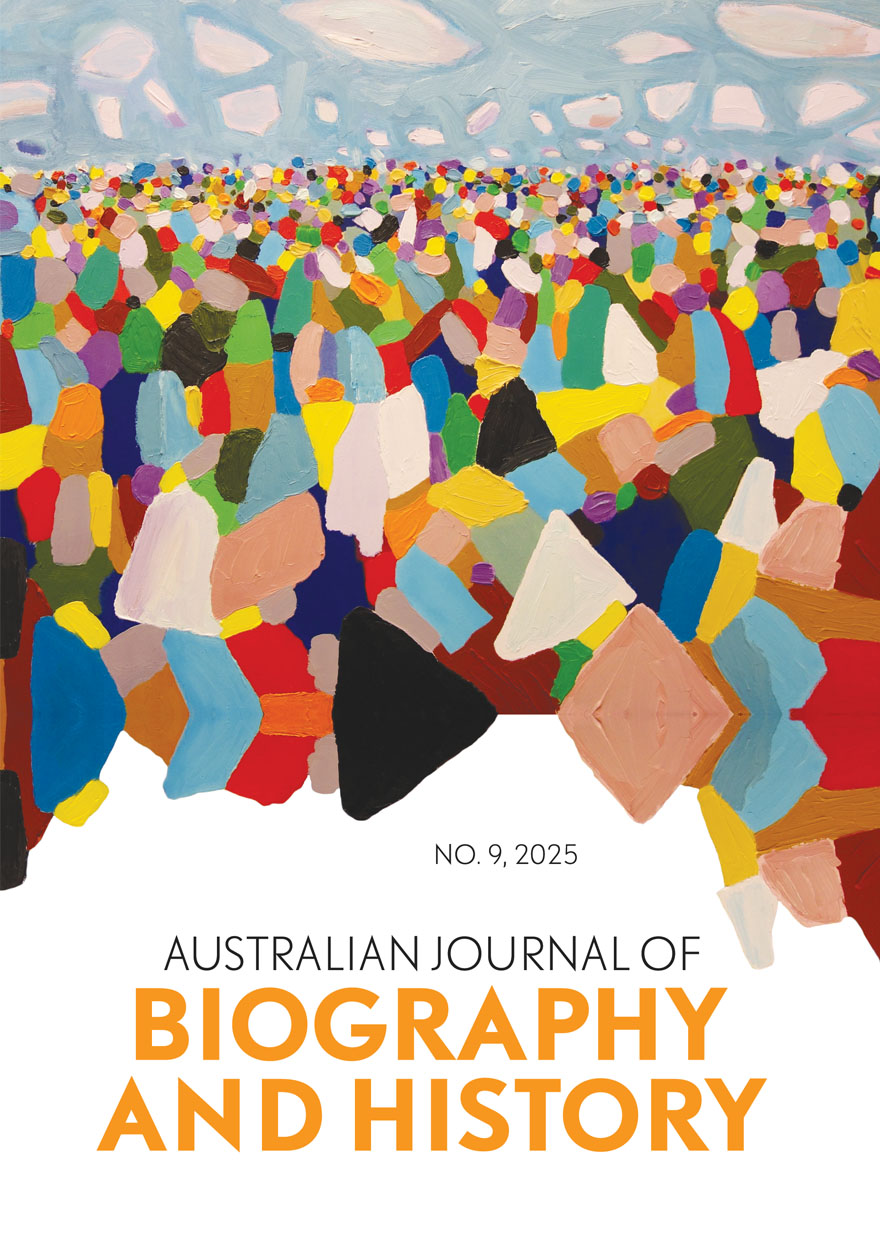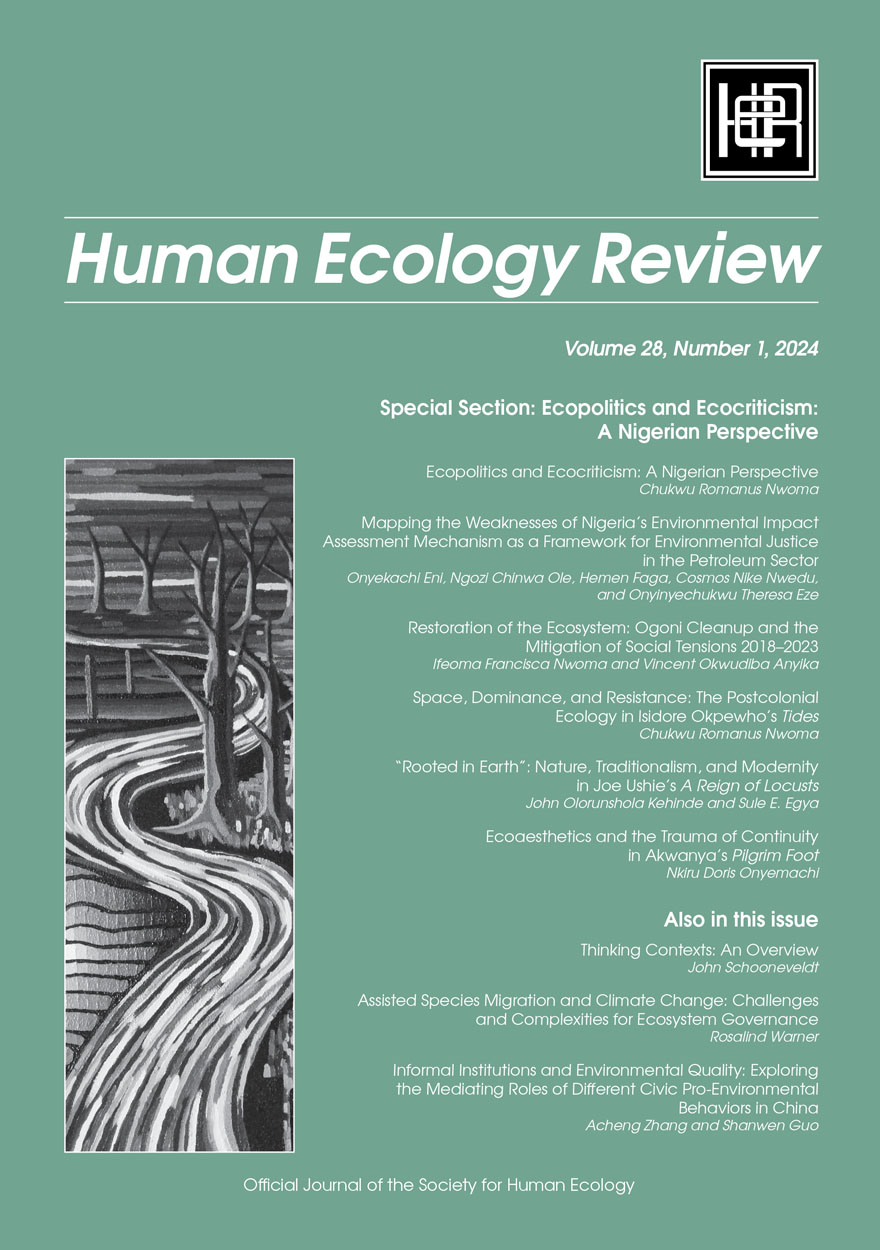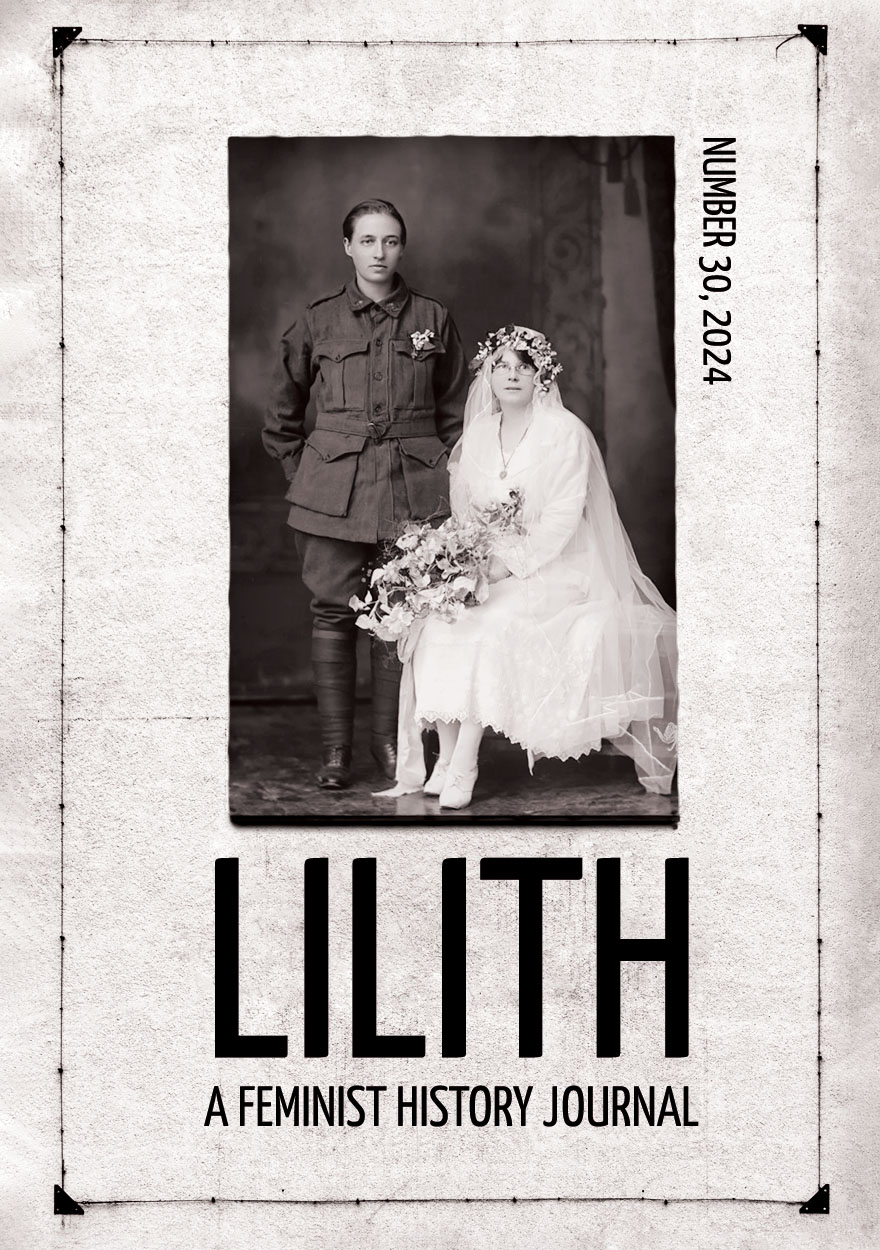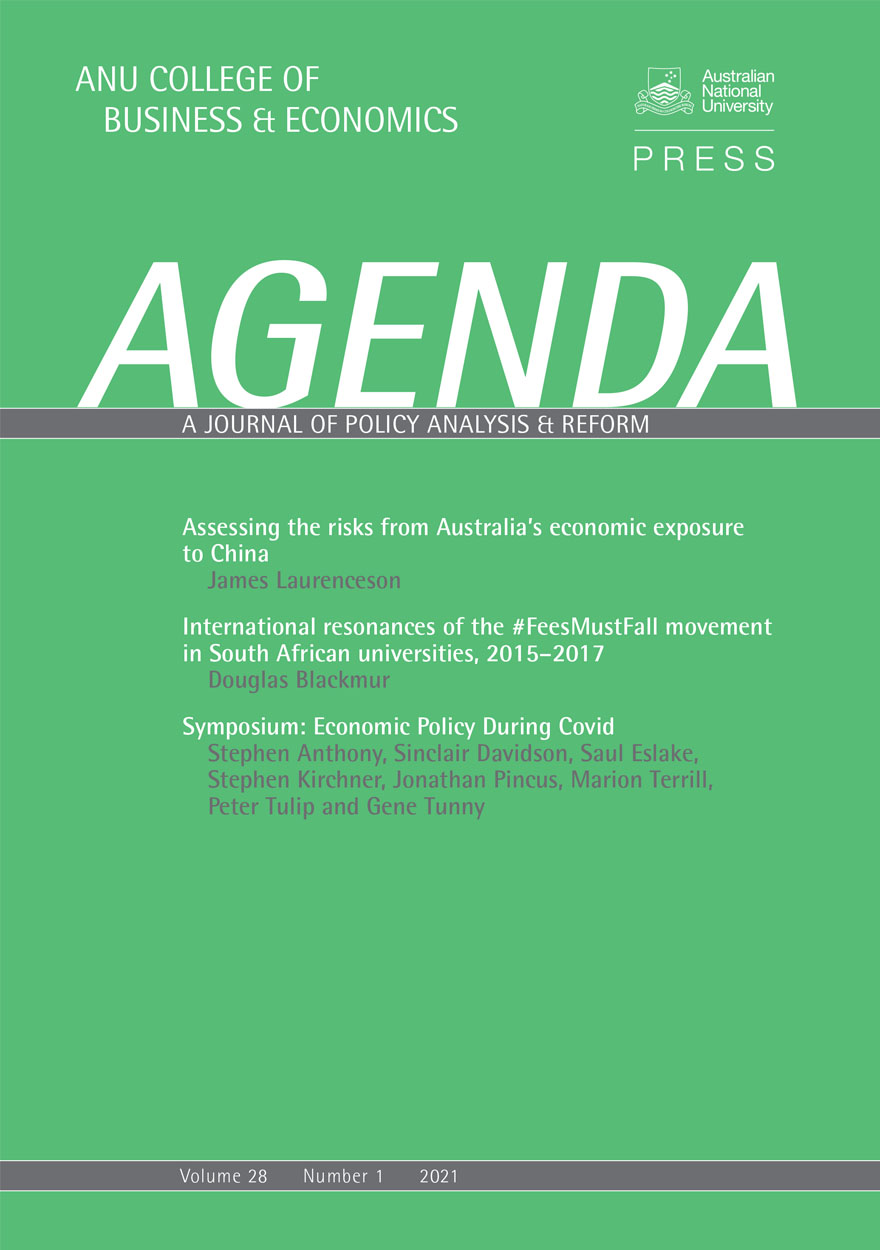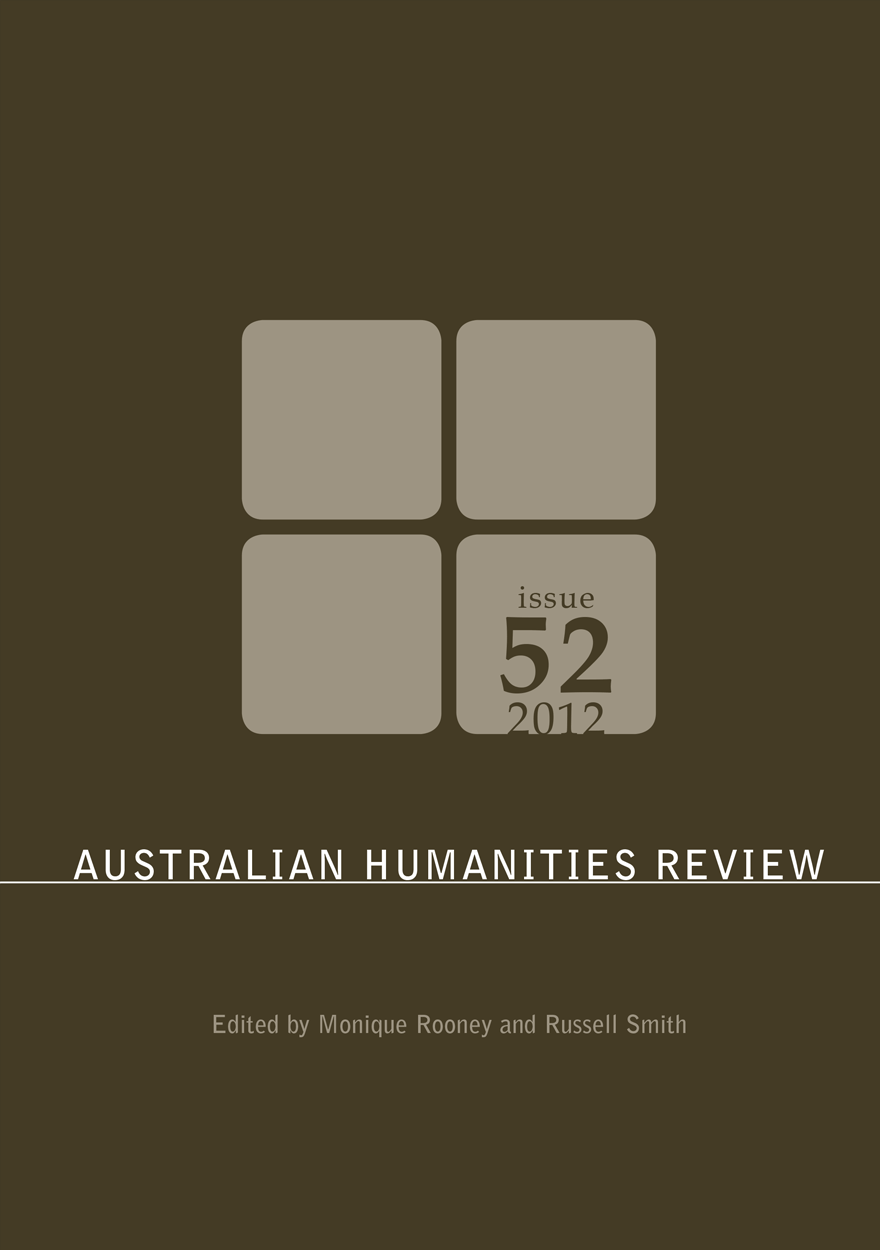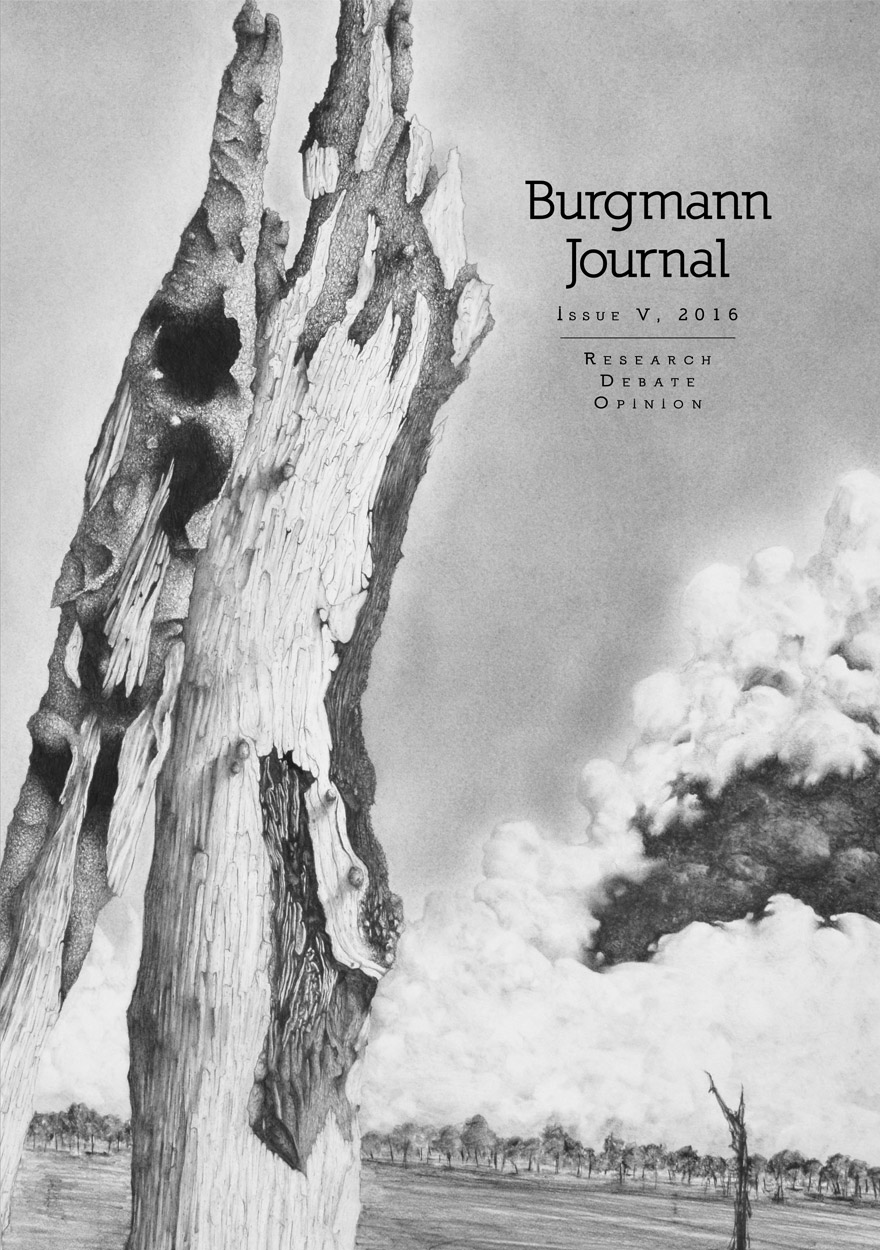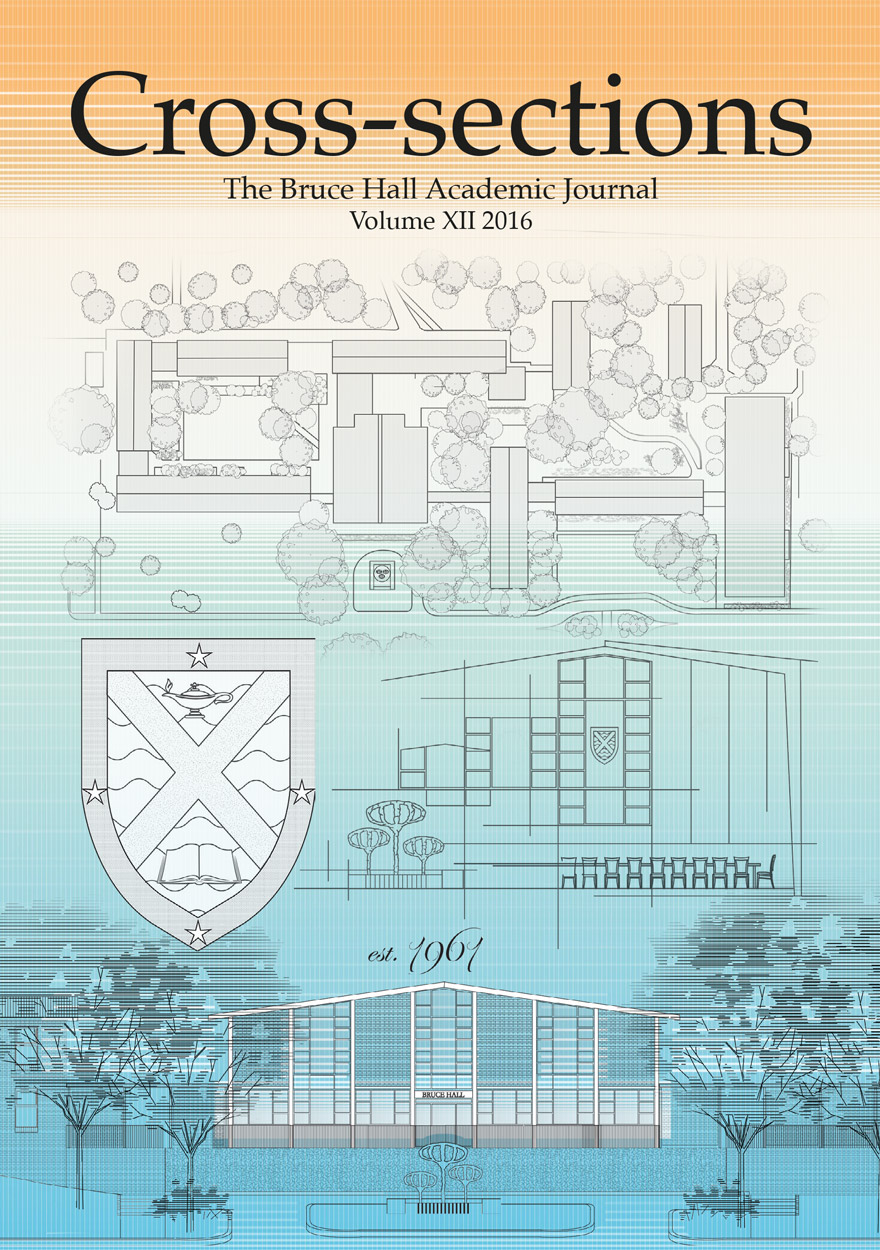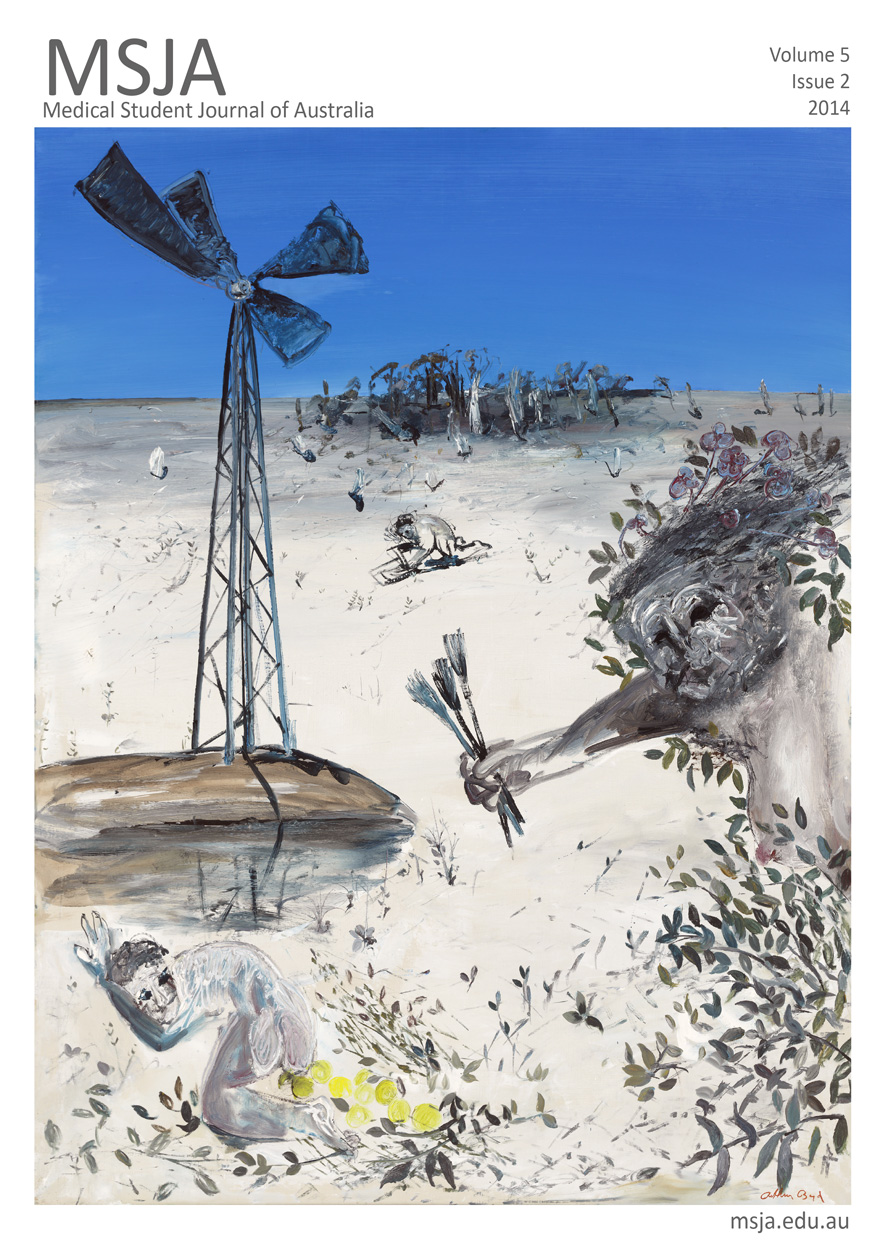Journals
Browse or search a variety of academic journals maintained by ANU Press, or find out more about the journal authors. Download the book for free or buy a print-on-demand copy.

A Cautious New Approach »
China's Growing Trilateral Aid Cooperation
Authored by: Denghua Zhang
Publication date: March 2020
‘As a student of international relations and a former diplomat, Zhang brings the insights of a practitioner and the eye of scholar to explain why Chinese actors choose to engage in aid cooperation with traditional donors in the Asia-Pacific. This book is among the first to take a holistic approach to understanding the motivations of the many agencies involved in China’s aid program, and it will challenge the expectations of many readers.’
—Dr Graeme Smith, The Australian National University
‘This book breaks new ground by examining a little-known dimension of China’s foreign policy: trilateral aid cooperation. Denghua Zhang sets this highly original analysis in the context of the new assertiveness of Chinese foreign policy under Xi Jinping, the China International Development Cooperation Agency established in 2018, and the Belt and Road Initiative, which now serves as the framework for Chinese overseas aid and engagement. At a time when the debate in the West about the rise of China has intensified, not always knowledgeably, this book fills an important gap in our understanding of China in Southeast Asia and the Pacific.’
—Dr Stewart Firth, The Australian National University
‘This thoroughly researched work examines trilateral cooperation as a new and interesting aspect of China’s growing international aid program, and as a window into the changing nature of that program as well as the wider foreign policy in which it is embedded. The broad themes and topics discussed are clearly significant, ultimately touching on one of the most important international issues of our time, the implications of the rise of China for a long-established Western-dominated international system.’
—Prof. Terence Wesley-Smith, University of Hawai‘i

East Asia Forum Quarterly: Volume 12, Number 1, 2020 »
Publication date: March 2020
The changing geopolitical context compels middle powers to act. Countries have responded by forming explicit alliances, building upon hedging strategies or altering their leanings from one great power to another. The need for collective action is more urgent than ever to deal with emerging regional and global challenges.
This issue of East Asia Forum Quarterly looks at middle powers and the range of priorities they have. Some are focused on their domestic priorities while others are more eager to shape the political, economic and security dimensions in the region. Our contributors offer a variety of perspectives on the challenges that middle powers face and identify the call of middle-power vision in defending the rules-based order.
EAFQ 12.1 is dedicated to Aileen S.P. Baviera, founding president of Asia Pacific Pathways to Progress, who died on 21 March 2020, from pneumonia related to COVID-19.
East Asia Forum Quarterly grew out of East Asia Forum (EAF) online, which has developed a reputation for providing a platform for the best in Asian analysis, research and policy comment on the Asia Pacific region in world affairs. EAFQ aims to provide a further window onto research in the leading research institutes in Asia and to provide expert comment on current developments within the region. The East Asia Forum Quarterly, like East Asia Forum online, is an initiative of the East Asia Forum (EAF) and its host organisation, the East Asian Bureau of Economic Research (EABER) in the Crawford School of Economics and Government in the College of Asia & the Pacific at The Australian National University.
Download for free
Not available for purchase

Re-imagining Japan after Fukushima »
Authored by: Tamaki Mihic
Publication date: March 2020
The 2011 Tōhoku earthquake, tsunami and Fukushima nuclear disaster (collectively referred to as ‘3.11’, the date of the earthquake), had a lasting impact on Japan’s identity and global image. In its immediate aftermath, mainstream media presented the country as a disciplined, resilient and composed nation, united in the face of a natural disaster. However, 3.11 also drew worldwide attention to the negative aspects of Japanese government and society, thought to have caused the unresolved situation at Fukushima.
Spurred by heightened emotions following the triple disaster, the Japanese became increasingly polarised between these two views of how to represent themselves. How did literature and popular culture respond to this dilemma? Re-imagining Japan after Fukushima attempts to answer that question by analysing how Japan was portrayed in post-3.11 fiction. Texts are selected from the Japanese, English and French languages, and the portrayals are also compared with those from non-fiction discourse. This book argues that cultural responses to 3.11 had a significant role to play in re-imagining Japan after Fukushima.

In from the Cold »
Reflections on Australia’s Korean War
Publication date: March 2020
Open hostilities in the Korean War ended on the 27th of July 1953. The armistice that was signed at that time remains the poignant symbol of an incomplete conclusion – of a war that retains a distinct possibility of resuming at short notice.
So what did Australia contribute to the Korean War from June 1950 to July 1953? What were the Australians doing there? How significant was the contribution and what difference did it make? What has that meant for Australia since then, and what might that mean for Australia into the future?
Australians served at sea, on land and in the air alongside their United Nations partners during the war. They fought with distinction, from bitterly cold mountain tops, to the frozen decks of aircraft carriers and in dogfights overhead. This book includes the perspectives of leading academics, practitioners and veterans contributing fresh ideas on the conduct and legacy of the Korean War. International perspectives from allies and adversaries provide contrasting counterpoints that help create a more nuanced understanding of Australia’s relatively small but nonetheless important contribution of forces in the Korean War. The book finishes with some reflections on implications that the Korean War still carries for Australia and the world to this day.

Learning from Fukushima (Japanese version) »
Nuclear power in East Asia
Edited by: Peter Van Ness, Mel Gurtov
Publication date: March 2020
東アジアの原子力に未来はあるかーー福島の原発事故を受け開催された、原子力エネルギーをめぐる二つの重要な国際会議の成果。ノーベル平和賞ICAN創設者をはじめとする核問題の専門家が内外から参加。各国の原子力政策、原発推進の真のコスト、ポスト原子力の未来等、東アジアにおける原子力の現状と課題を浮き彫りにする。オーストラリア国立大学出版局との共同出版。

Vietnam Vanguard »
The 5th Battalion's Approach to Counter-Insurgency, 1966
Edited by: Ron Boxall, Robert O’Neill
Publication date: February 2020
The Vietnam War, and Australia’s part in it, was a major military event, calling for willingness to face death and destruction on the battlefield on the part of those sent there, especially the men of our infantry battalions who formed the spearhead of our forces in Vietnam. For many reasons, the Australian public know relatively little about what our Army did in Vietnam during the war, particularly during the years of our peak commitment, 1965–72. This book attempts to make the true nature of the war clearer to readers, emphasising how hard fought it was during major operations.
Twenty-seven of the contributing authors of this book were involved in the 1966 deployment of the 1st Australian Task Force into Phuoc Tuy Province. This formation was the first Australian Army force larger than an infantry battalion group to be deployed into a major war since World War II. 5th Battalion, the Royal Australian Regiment (5 RAR), was in the vanguard as the task force’s first element committed to operations to seize and occupy Nui Dat base and embark on establishing dominance over the enemy.
The narratives presented in this book give rare insights into thoughts of the soldiers at the time and how they have come to view the Australian Government’s hurried expansion of its initial commitment to that war, the Army’s state of preparedness for that wider involvement, and how those in its forefront adapted to get the job done, both in and out of operations, despite numerous shortcomings in higher level planning.
Both professional soldiers and conscripted national servicemen have contributed viewpoints to these pages.
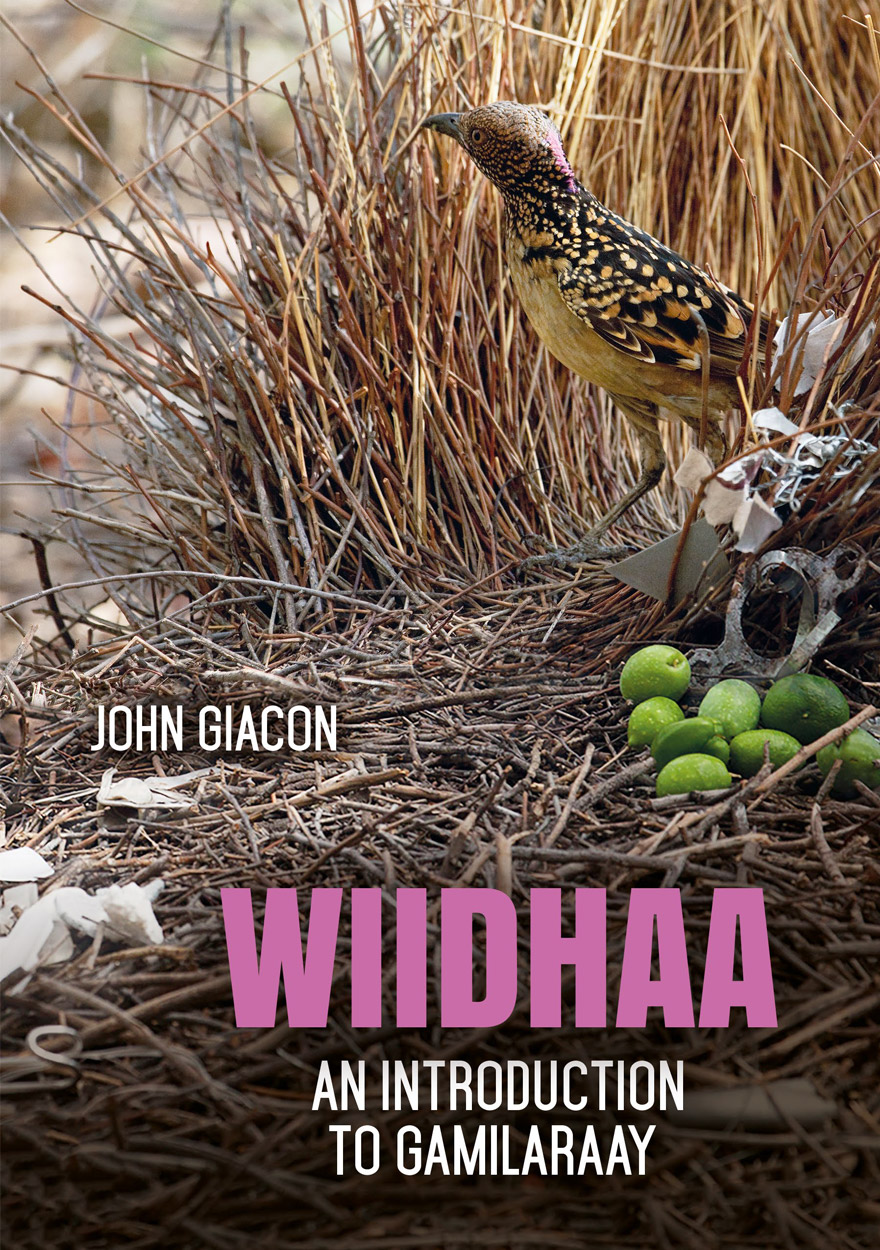
Wiidhaa »
An Introduction to Gamilaraay
Authored by: John Giacon
Publication date: February 2020
The Gamilaraay language declined in use for many years after the colonisation of Australia. From around 1990, Gamilaraay people and others have been working to revive the language. This book draws on recent research into previous records and analyses of Gamilaraay and of the closely related, and better recorded, Yuwaalaraay. It provides an introduction to many aspects of the language including verbs, the case system and the extensive pronoun paradigm, in a format that students have found very helpful for the last 12 years.
Please note: Readers will need to download and open the PDF files in the latest version Adobe Acrobat to access and listen to the sound files within the book.
This textbook is used as course material in:
Gamilaraay – an introduction to an Australian Indigenous Language INDG2003 and INDG6003

Australia’s Fertility Transition »
A study of 19th-century Tasmania
Authored by: Helen Moyle
Publication date: February 2020
In the late 19th and early 20th centuries, most countries in Europe and English-speaking countries outside Europe experienced a fertility transition, where fertility fell from high levels to relatively low levels. England and the other English-speaking countries experienced this from the 1870s, while fertility in Australia began to fall in the 1880s.
This book investigates the fertility transition in Tasmania, the second settled colony of Australia, using both statistical evidence and historical sources. The book examines detailed evidence from the 1904 New South Wales Royal Commission into the Fall in the Birth Rate, which the Commissioners regarded as applying not only to NSW, but to every state in Australia.
Many theories have been proposed as to why fertility declined at this time: theories of economic and social development; economic theories; diffusion theories; the spread of secularisation; increased availability of artificial methods of contraception; and changes in the rates of infant and child mortality. The role of women in the fertility transition has generally been ignored.
The investigation concludes that fertility declined in Tasmania in the late 19th century in a period of remarkable social and economic transformation, with industrialisation, urbanisation, improvements in transport and communication, increasing levels of education and opportunities for social mobility. One of the major social changes was in the status and role of women, who became the driving force behind the fertility decline.

The Jingshan Report »
Opening China’s Financial Sector
Authored by: China Finance 40 Forum Research Group
Publication date: January 2020
The Jingshan Report is a collection of research papers on key issues for China’s financial opening, including reform of the RMB exchange rate regime, management of cross-border capital flows and financial support for the Belt and Road Initiative. Authored by leading experts in the relevant fields, the report examines the evolution, current status and problems with the financial opening policy over the past four decades, and puts forward policy recommendations on how to steadily push forward China’s financial opening.

Human Ecology Review: Volume 25, Number 2 »
Publication date: December 2019
Human Ecology Review is a semi-annual journal that publishes peer-reviewed interdisciplinary research on all aspects of human–environment interactions (Research in Human Ecology). The journal also publishes essays, discussion papers, dialogue, and commentary on special topics relevant to human ecology (Human Ecology Forum), book reviews (Contemporary Human Ecology), and letters, announcements, and other items of interest (Human Ecology Bulletin). Human Ecology Review also publishes an occasional paper series in the Philosophy of Human Ecology and Social–Environmental Sustainability.
Download for free
Not available for purchase

Debating Lapita »
Distribution, Chronology, Society and Subsistence
Edited by: Stuart Bedford, Matthew Spriggs
Publication date: December 2019
‘This volume is the most comprehensive review of Lapita research to date, tackling many of the lingering questions regarding origin and dispersal. Multidisciplinary in nature with a focus on summarising new findings, but also identifying important gaps that can help direct future research.’
— Professor Scott Fitzpatrick, Department of Anthropology, University of Oregon
‘This substantial volume offers a welcome update on the definition of the Lapita culture. It significantly refreshes the knowledge on this foundational archaeological culture of the Pacific Islands in providing new data on sites and assemblages, and new discussions of hypotheses previously proposed.’
— Dr Frédérique Valentin, Centre national de la recherche scientifique (CNRS), Paris
This volume comprises 23 chapters that focus on the archaeology of Lapita, a cultural horizon associated with the founding populations who first colonised much of the south west Pacific some 3000 years ago. The Lapita culture has been most clearly defined by its distinctive dentate-stamped decorated pottery and the design system represented on it and on further incised pots. Modern research now encompasses a whole range of aspects associated with Lapita and this is reflected in this volume. The broad overlapping themes of the volume—Lapita distribution and chronology, society and subsistence—relate to research questions that have long been debated in relation to Lapita.

Civil Society and Transitional Justice in Asia and the Pacific »
Publication date: November 2019
Over the last two decades, civil society has helped catalyse responses to the legacies of violent conflicts and oppressive political regimes in Asia and the Pacific. Civil society has advocated for the establishment of criminal trials and truth commissions, monitored their operations and pushed for take-up of their recommendations. It has also initiated community-based transitional justice responses. Yet, there has been little in-depth examination of the breadth and diversity of these roles. This book addresses this gap by analysing the heterogeneity of civil society transitional justice activity in Asia and the Pacific.
Based upon empirically grounded case studies of Timor-Leste, Indonesia, Cambodia, Myanmar, Bougainville, Solomon Islands and Fiji, this book illustrates that civil society actors can have different – and sometimes competing – priorities, resources and approaches to transitional justice. Their work is also underpinned by diverse understandings of ‘justice’. By reflecting on the richness of this activity, this book advances contemporary debates about transitional justice and civil society. It will also be a valuable resource for scholars and practitioners working on Asia and the Pacific.

Commonwealth Responsibility and Cold War Solidarity »
Australia in Asia, 1944–74
Authored by: Dan Halvorson
Publication date: November 2019
Australia’s engagement with Asia from 1944 until the late 1960s was based on a sense of responsibility to the United Kingdom and its Southeast Asian colonies as they navigated a turbulent independence into the British Commonwealth. The circumstances of the early Cold War decades also provided for a mutual sense of solidarity with the non‑communist states of East Asia, with which Australia mostly enjoyed close relationships. From 1967 into the early 1970s, however, Commonwealth Responsibility and Cold War Solidarity demonstrates that the framework for this deep Australian engagement with its region was progressively eroded by a series of compounding, external factors: the 1967 formation of ASEAN and its consolidation by the mid-1970s as the premier regional organisation surpassing the Asian and Pacific Council (ASPAC); Britain’s withdrawal from East of Suez; Washington’s de‑escalation and gradual withdrawal from Vietnam after March 1968; the 1969 Nixon doctrine that America’s Asia-Pacific allies must take up more of the burden of providing for their own security; and US rapprochement with China in 1972. The book shows that these profound changes marked the start of Australia’s political distancing from the region during the 1970s despite the intentions, efforts and policies of governments from Whitlam onwards to foster deeper engagement. By 1974, Australia had been pushed to the margins of the region, with its engagement premised on a broadening but shallower transactional basis.

International Review of Environmental History: Volume 5, Issue 2, 2019 »
Edited by: James Beattie
Publication date: November 2019
International Review of Environmental History takes an interdisciplinary and global approach to environmental history. It encourages scholars to think big and to tackle the challenges of writing environmental histories across different methodologies, nations, and time-scales. The journal embraces interdisciplinary, comparative and transnational methods, while still recognising the importance of locality in understanding these global processes.
The journal's goal is to be read across disciplines, not just within history. It publishes on all thematic and geographic topics of environmental history, but especially encourage articles with perspectives focused on or developed from the southern hemisphere and the ‘global south’.
Download for free
Not available for purchase

East Asia Forum Quarterly: Volume 11, Number 4, 2019 »
Publication date: November 2019
The idea that countries can pursue prosperity and security as separate streams of the national interest has passed. Economics and security have always been enmeshed, although we assumed otherwise. The nature of the relationship between the two is changing fast. The narratives that surround the change find it difficult to keep up with the facts.
The world has become more multipolar, with remarkable growth outside the established powers in the North Atlantic. And big countries—not just the United States and China, but other G20 members like Brazil, Turkey, Russia and the United Kingdom—have become more nationalist and brazen in asserting what they perceive to be their economic and security interests over those of others. The US–China relationship is increasingly characterised by strategic competition in both the economic and security domains.
At the same time, digital technology has not just transformed products, firms and markets, it has opened them to cyber disruption and attack, resulting in a cross-over of security into the economic and social domains.
This issue of the East Asia Forum Quarterly explores what is happening, why and how to respond to the change. These essays argue for careful thought and active engagement by governments, business and the broader community. Genuine dialogue and problem-solving between the economic and security parts of universities and government is a good first step to frame the problem broadly, keep perspective and find solutions.
East Asia Forum Quarterly grew out of East Asia Forum (EAF) online, which has developed a reputation for providing a platform for the best in Asian analysis, research and policy comment on the Asia Pacific region in world affairs. EAFQ aims to provide a further window onto research in the leading research institutes in Asia, and to provide expert comment on current developments within the region. East Asia Forum Quarterly, like East Asia Forum online, is an initiative of the East Asia Forum and its host organisation, the East Asian Bureau of Economic Research in the Crawford School of Economics and Government in the College of Asia & the Pacific at The Australian National University.
Download for free
Not available for purchase

Pacific Youth »
Local and Global Futures
Edited by: Helen Lee
Publication date: October 2019
Pacific populations are becoming younger and this ‘youth bulge’ is often perceived as a dangerous precursor to civil unrest. Yet young people are also a valuable resource holding exciting potential for the future of island nations. Addressing these conflicting views of youth, this volume presents ethnographic case studies of young people from across the Pacific and the diaspora. Moving beyond the typical focus on ‘youth problems’ in reports by Pacific governments and development agencies, the authors examine the highly diverse lives and perspectives of young people in urban and rural locations. They celebrate the contributions of youth to their communities while examining the challenges they face. The case studies explore the impacts of profound local and global changes and cover a wide sweep of youth experiences across themes of education, employment and economic inequalities, political and civil engagement, and migration and the diaspora.
Contributors to this volume bring many decades of experience of research with Pacific people as well as fresh perspectives from early career and graduate researchers. Most are anthropologists and their chapters contribute to the interdisciplinary fields of youth studies and Pacific studies, offering thought-provoking insights into the possibilities for Pacific youth as they face uncertain futures.

Framing the Islands »
Power and Diplomatic Agency in Pacific Regionalism
Authored by: Greg Fry
Publication date: October 2019
Since its origins in late eighteenth-century European thought, the idea of placing a regional frame around the Pacific islands has never been just an exercise in geographical mapping. This framing has always been a political exercise. Contending regional projects and visions have been part of a political struggle concerning how Pacific islanders should live their lives. Framing the Islands tells the story of this political struggle and its impact on the regional governance of key issues for the Pacific such as regional development, resource management, security, cultural identity, political agency, climate change and nuclear involvement. It tells this story in the context of a changing world order since the colonial period and of changing politics within the post-colonial states of the Pacific.
Framing the Islands argues that Pacific regionalism has been politically significant for Pacific island states and societies. It demonstrates the power associated with the regional arena as a valued site for the negotiation of global ideas and processes around development, security and climate change. It also demonstrates the political significance associated with the role of Pacific regionalism as a diplomatic bloc in global affairs, and as a producer of powerful policy norms attached to funded programs. This study also challenges the expectation that Pacific regionalism largely serves hegemonic powers and that small islands states have little diplomatic agency in these contests. Pacific islanders have successfully promoted their own powerful normative framings of Oceania in the face of the attempted hegemonic impositions from outside the region; seen, for example, in the strong commitment to the ‘Blue Pacific continent’ framing as a guiding ideology for the policy work of the Pacific Islands Forum in the face of pressures to become part of Washington’s Indo-Pacific strategy.

Power, Protection and Magic in Thailand »
The Cosmos of a Southern Policeman
Authored by: Craig J. Reynolds
Publication date: October 2019
This biographical study of an unusual southern policeman explores the relationship between religion and power in Thailand during the early twentieth century when parts of the country were remote and banditry was rife. Khun Phan (1898–2006), known as Lion Lawman, sometimes used rather too much lethal force in carrying out his orders. He was the most famous graduate of a monastic academy in the mid-south, whose senior teachers imparted occult knowledge favoured by fighters on both sides of the law. Khun Phan imbibed this knowledge to confront the risks and uncertainty that lay ahead and bolster his confidence and self-reliance for his struggle with adversaries.
Against the background of national events, the story is rooted in the mid-south where the policeman was born and died. Based on a wide range of works in Thai language, on field trips to the region and on interviews with local and regional scholars as well as the policeman’s descendants, this generously illustrated book, accompanied by short video clips, brings to life the distinctive environment of the lakes district on the Malay Peninsula.

Following the Water »
Environmental History and the Hydrological Cycle in Colonial Gippsland, Australia, 1838–1900
Authored by: Kylie Carman-Brown
Publication date: October 2019
Water reflects culture.
This book is a detailed analysis of hydrological change in Australia’s largest inland waterway in Australia, the Gippsland Lakes in Victoria, in the first 70 years of white settlement.
Following air, water is our primal need. Unlike many histories, this book looks at the entire hydrological cycle in one place, rather than focusing on one bit. Deftly weaving threads from history, hydrology and psychology into one, Following the Water explores not just what settlers did to the waterscape, but probes their motivation for doing so.
By combining unlikely elements together such as swamp drainage, water proofing techniques and temperance lobbying, the book reveals a web of perceptions about how water ‘should be’. With this laid clear, we can ask how different we are from our colonial forebears.

Levelling Wind »
Remembering Fiji
Authored by: Brij V. Lal
Publication date: October 2019
‘What I have sought to do in my work is to give voiceless people a voice, place and purpose, the sense of dignity and inner strength that comes from never giving up no matter how difficult the circumstances. History belongs as much to the vanquished as to the victors.’
— Brij V. Lal
‘Professor Brij Lal is the finest historian of the Indian indentured experience and the Indian diaspora. His Girmitiyas is a classic.’
— Emeritus Professor Clem Seecharan, London Metropolitan University
‘Brij Lal is a highly respected, versatile and imaginative scholar who has made a lasting contribution to the historiography of the Pacific.’
— Dr Rod Alley, Victoria University of Wellington
‘Professor Brij Lal’s life is a remarkable journey of a scholar and an intellectual whose writings are truly transformative; a man of moral clarity and courage who also has deep pain at being cut off from his homeland.’
— Professor Michael Wesley, Dean of the College of Asia and the Pacific, The Australian National University
‘Brij Lal is a singular scholar, whose work has spanned disciplines – from history, political commentary, encyclopedia, biography and “faction”. Brij is without doubt the most eminent scholar in the humanities and social sciences Fiji has ever produced. He also remains one of the most significant public intellectuals of his country, despite having been banned from entering it in 2009.’
— Emeritus Professor Clive Moore, University of Queensland
‘Brij Lal is an accomplished and versatile historian and true son of Fiji. Above all, there is affirmation here of the enduring worth of good literature and the value of good education that Lal received and wants others to experience. The world needs more Lals who speak out against ruling opinions and dare to stray into the pastures of independent thought.’
— Professor Doug Munro, historian and biographer, Wellington, and Adjunct Professor at the University of Queensland

Australian Journal of Biography and History: No. 2, 2019 »
Publication date: October 2019
The second issue of the Australian Journal of Biography and History is a joint project between the National Centre of Biography at The Australian National University (ANU), and the Canberra and District Historical Society (CDHS). It seeks to recognise, perhaps reiterate, the relationship between the study of biography, as exemplified by the Australian Dictionary of Biography (ADB), and the practice of local and family history and heritage, the mission of the society. Most of the contributors are members of the society, and have been involved in the often painstaking and minute study of aspects of the history of Canberra and its region for many years. In ‘A City and Its People: Canberra in the Australian Dictionary of Biography’, Karen Fox explores Canberra history by discussing some of wide array of people ‘who have lived, worked, loved, and fought in the Canberra district’, and who are represented in the ADB. James McDonald, in his article ‘A Good Sheep Station Ruined’, examines the pastoral origins of the Canberra district, finding that the industry in the region was, before the founding of the capital city, a centre of innovation and enterprise, with stations such as Henry ‘Babe’ Curran’s Ginninderra a national exemplar of the wool industry. In a second article, ‘Migration as an Opportunity for Reinvention’, McDonald discusses the potential of immigration to refashion identities, using the biographies of Alfred and Margaret Rich, early settlers at Gundaroo, who had faced disadvantages in England because of their racial backgrounds.
‘Three Years in the Life of Chief Constable Patrick Kinsela’, by Gillian Kelly, examines the role of the first policeman in the district, who took up his posting at the nascent town of Queanbeyan in 1837, and in many ways exemplified the system of justice in the region until his early death in 1841. Kinsela is an unusual biographical subject as very little is known about his life until he assumed the role, while from then on, his life and times comes into focus by virtue of his reports, reports in the local press and colonial government inquiries. Michael Hall, in his article ‘The Sentinel over Canberra’s Military History’, explores the connections between the Anglican Church of St John the Baptist, now in the Canberra suburb of Reid, and the military, and the war experiences of some of its parishioners. The final two articles of the issue move towards aspects of the modern history of Canberra, the first exploring the life stories of Vince and Viola Kalokerinos who, for many years, ran a milk bar at Curtin, a place that has assumed a prominent place in both the commercial and social history, and indeed has become almost a part of the folklore, of the city. Their story is a reminder of the impact of Greek immigrants on the development of Canberra, and their willingness to work long hours to provide essential services to a population that was made up largely of government employees. Finally, Nick Swain discusses the life and work of one of Canberra’s early photographic entrepreneurs, Les Dwyer, who came to Canberra as a construction labourer in 1924 but, as a consequence of the Depression and workplace injury, converted a hobby into an enterprise. Included also are two essay length review articles, and a series of reviews on recently published Australian biographical works.
Download for free
Not available for purchase

Made in China Journal: Volume 4, Issue 3, 2019 »
Edited by: Ivan Franceschini, Nicholas Loubere
Publication date: September 2019
Bless you prison, bless you for being in my life. For there, lying upon the rotting prison straw, I came to realise that the object of life is not prosperity as we are made to believe, but the maturity of the human soul.
— Alexandr I. Solzhenitsyn, The Gulag Archipelago (1918-1956)
With these words, Soviet star dissident Aleksandr Solzhenitsyn exalted the transformative role of the gulag—where he had been imprisoned for eight years—in reconfiguring his soul. Just like his account of life in the labour camps played a fundamental role in shaping public perceptions of the Soviet labour camps, our views of the Chinese detention system are also widely shaped by the writings and testimonies of former political prisoners, whether victims of the mass campaigns of the Mao era or more recent crackdowns against dissident voices. Reading these accounts, detention easily assumes the tragic connotations of martyrdom, and detainees come to be surrounded by a halo of heroism. But what about those uncountable prisoners who are detained for common crimes or less-noble causes? What about the reality of murderers, thieves, drug addicts, and prostitutes? Is prison a blessing for them too?
This issue of the Made in China Journal aims to provide a more balanced account of Chinese experiences of detention by examining situations as diverse as reeducation camps in Xinjiang, forced detox camps for drug addicts, involuntary hospitalisation of people with mental health problems, the contested legacies of labour camps from the Maoist past, and the latest reforms in the fields of Chinese criminal justice. Such grim analyses are also key to understanding the upheavals that are currently taking place in Hong Kong. We should not forget that the popular mobilisations of these past months began in response to attempts by the Hong Kong authorities to pass an extradition bill that would have established a new case-by-case model to transfer fugitives to any jurisdiction that the former British colony lacks a formal agreement with, including mainland China. Reading the accounts included in this issue of the journal, it is not difficult to understand why this became a flashpoint.
Download for free
Not available for purchase
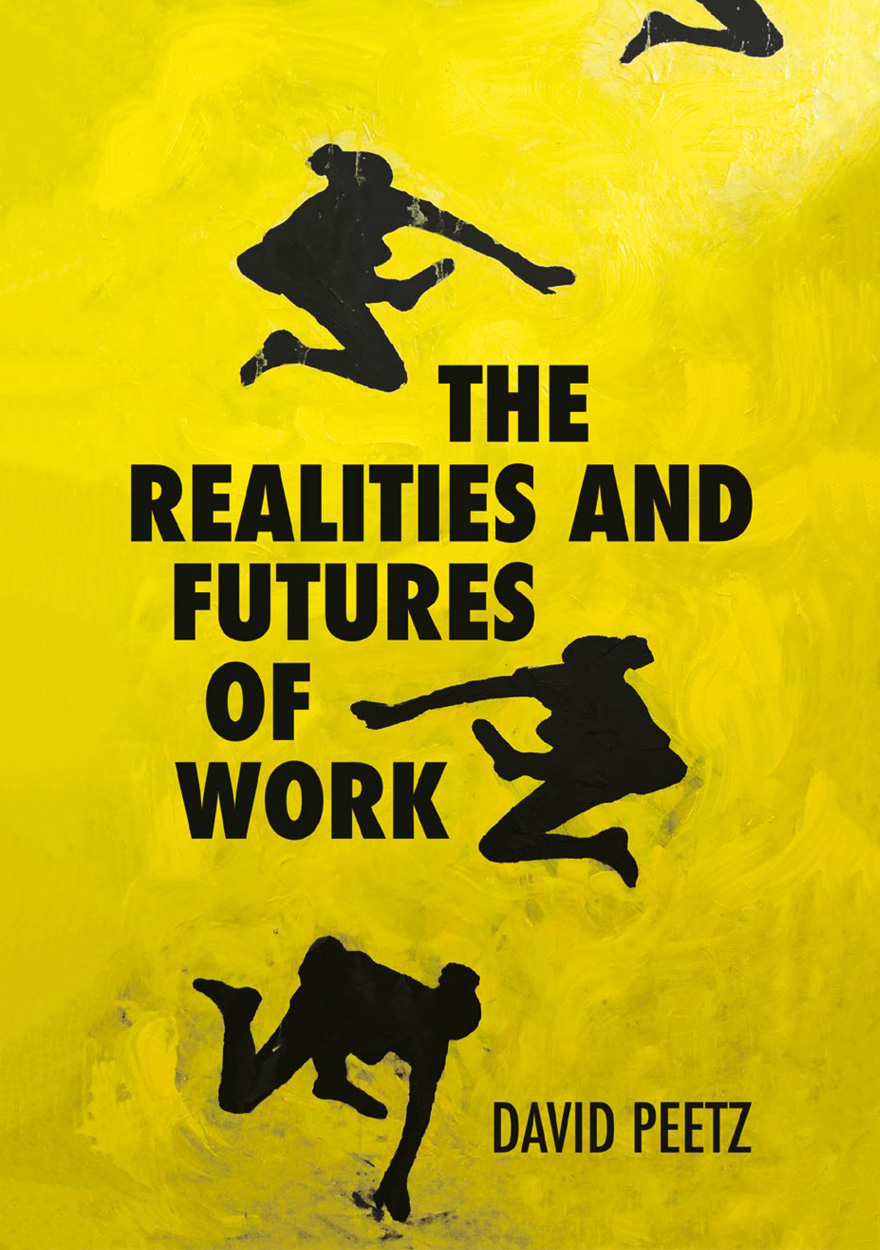
The Realities and Futures of Work »
Authored by: David Peetz
Publication date: September 2019
What do we know about the current realities of work and its likely futures? What choices must we make and how will they affect those futures? Many books about the future of work start by talking about the latest technology, and focus on how technology is going to change the way we work. And there is no doubt that technology will have huge impacts. However, to really understand the direction in which work is going, and the impact that technology and other forces will have, we need to first understand where we are.
This book covers topics ranging from the ‘mega-drivers of change’ at work, power, globalisation and financialisation, to management, workers, digitalisation, the gig economy, gender, climate change, regulation and deregulation. In doing this, it refers to some of the great works of science fiction. It demolishes several myths, such as that the employment relationship is doomed, that we are all heading to becoming ‘freelancers’ or ‘gig workers’ one day, that most jobs will be destroyed by technological change, that the growth in jobs will mainly be in STEM fields, that we will no longer value collectivism as we will all be ‘individuals’, or that the death of unionism is inevitable.
The Realities and Futures of Work also rejects the idea of technological determinism—that whatever will be, will be, thanks to technological change—and so it refuses to accept that we simply need to prepare to adapt ourselves to the future by judicious training since there is nothing else we can do about it. Instead, this book provides a realistic basis for thinking about both the present and the future. It emphasises the choices we make, and the implications of those choices for the future of work.

Tulagi »
Pacific Outpost of British Empire
Authored by: Clive Moore
Publication date: September 2019
Tulagi was the capital of the British Solomon Islands Protectorate between 1897 and 1942. The British withdrawal from the island during the Pacific War, its capture by the Japanese and the American reconquest left the island’s facilities damaged beyond repair. After the war, Britain moved the capital to the American military base on Guadalcanal, which became Honiara.
The Tulagi settlement was an enclave of several small islands, the permanent population of which was never more than 600: 300 foreigners—one-third of European origin and most of the remainder Chinese—and an equivalent number of Solomon Islanders. Thousands of Solomon Islander males also passed through on their way to work on plantations and as boat crews, hospital patients and prisoners.
The history of the Tulagi enclave provides an understanding of the origins of modern Solomon Islands. Tulagi was also a significant outpost of the British Empire in the Pacific, which enables a close analysis of race, sex and class and the process of British colonisation and government in the late nineteenth and early twentieth centuries.
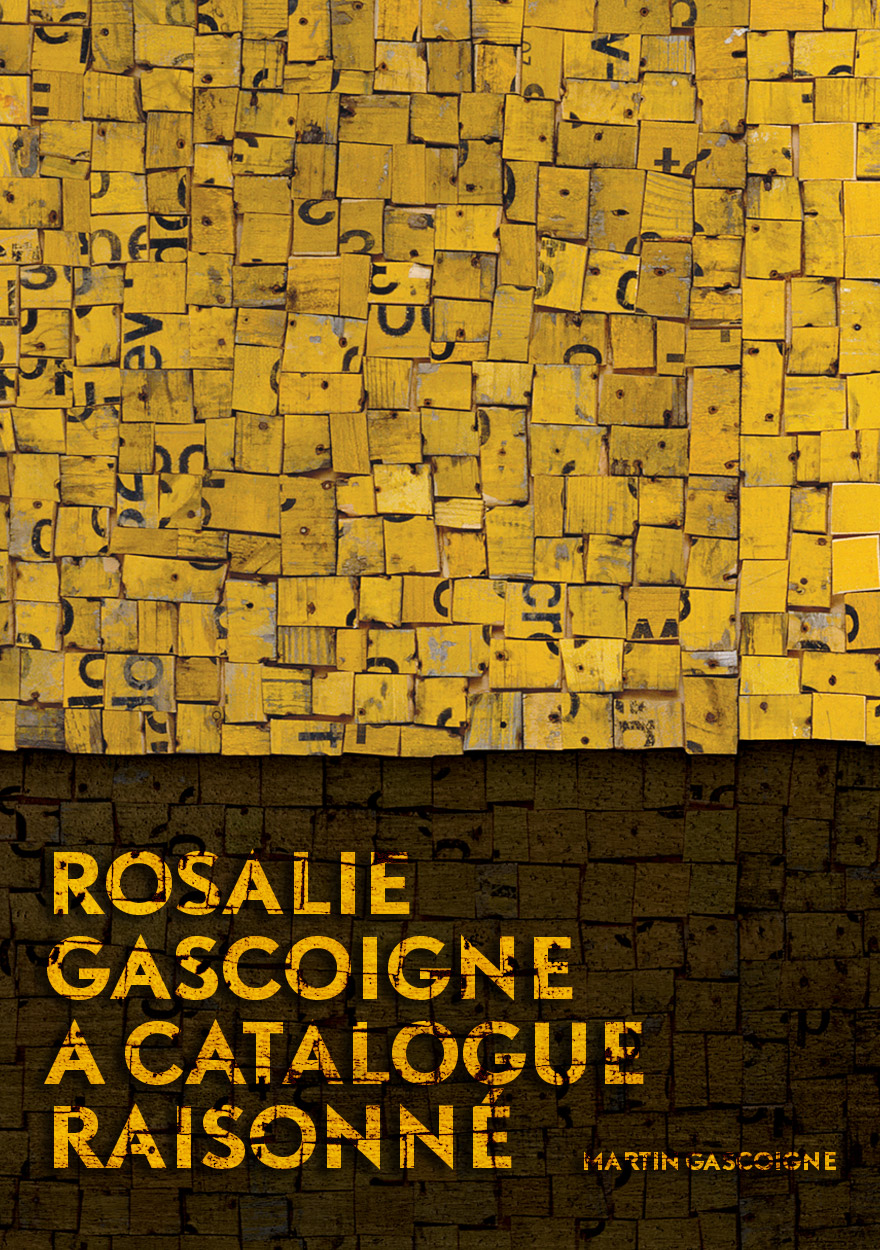
Rosalie Gascoigne »
A Catalogue Raisonné
Authored by: Martin Gascoigne
Publication date: September 2019
Rosalie Gascoigne (1917–1999) was a highly regarded Australian artist whose assemblages of found materials embraced landscape, still life, minimalism, arte povera and installations. She was 57 when she had her first exhibition. Behind this late coming-out lay a long and unusual preparation in looking at nature for its aesthetic qualities, collecting found objects, making flower arrangements and practising ikebana. Her art found an appreciative audience from the start. She was a people person, and it pleased her that through her exhibiting career of 25 years, her works were acquired by people of all ages, interests and backgrounds, as well as by the major public institutions on both sides of the Tasman Sea.
Watch the live video stream from the launch of Rosalie Gascoigne: A Catalogue Raisonné, held on Tuesday 17 September 2019 at the National Gallery of Australia, Canberra, with Director Nick Mitzevich and author Martin Gascoigne on the NGA's Facebook page.
In the media
Read the ANU Reporter article: Art in road signs.
Read the Canberra Times article: Assembling Rosalie Gascoigne's catalogue.
ANU Press Journals
Aboriginal History Journal »
Since 1977, the journal Aboriginal History has pioneered interdisciplinary historical studies of Australian Aboriginal people’s and Torres Strait Islander’s interactions with non-Indigenous peoples. It has promoted publication of Indigenous oral traditions, biographies, languages, archival and bibliographic guides, previously unpublished manuscript accounts, critiques of current events, and research and reviews in the fields of anthropology, archaeology, sociology, linguistics, demography, law, geography and cultural, political and economic history.
Aboriginal History Inc. is a publishing organisation based in the Australian Centre for Indigenous History, Research School of Social Sciences, The Australian National University, Canberra.
For more information on Aboriginal History Inc. please visit aboriginalhistory.org.au.
Submission details
Please send article submissions to aboriginal.history@anu.edu.au.
Articles of about 7,000 words in length (including footnotes and references) are preferred, but submissions up to 9,000 words will be considered. Please submit an electronic version of the paper (text only without embedded images or scans) in Microsoft Word or RTF format, along with a short abstract and author biography as a separate document.
ANU Historical Journal II »
The ANU Historical Journal II (ANUHJ II) is an open-access, peer-reviewed academic history journal of the ANU College of Arts and Social Sciences and the ANU College of Asia and the Pacific. It is a revival of the ANU Historical Journal, which was published between 1964 and 1987. Contributors to the first journal included academics such as Ken Inglis, Manning Clark, John Ritchie and Oliver MacDonagh along with then-emerging scholars Iain McCalman, Michael McKernan, Margaret George, Coral Bell, John Iremonger, Alastair Davidson, Susan Magarey and Rosemary Auchmuty. As well as upholding the Journal’s commitment to the work of students and early career researchers, the ANUHJ II has expanded its focus to include memoirs, short articles and long-form book reviews.
The ANUHJ II invites submissions from students, graduates and academics of any Australian university.
For more information about the ANUHJ II, please visit anuhj.com.au
Australian Journal of Biography and History »
The Australian Journal of Biography and History is an initiative of the National Centre of Biography (NCB) in the Research School of Social Sciences at The Australian National University. The NCB was established in 2008 to extend the work of the Australian Dictionary of Biography and to serve as a focus for the study of life writing in Australia, supporting innovative research and writing to the highest standards in the field, nationally and internationally. The Australian Journal of Biography and History seeks to promote the study of biography in Australia. Articles that appear in the journal are lively, engaging and provocative, and are intended to appeal to the current popular and scholarly interest in biography, memoir and autobiography. They recount interesting and telling life stories and engage critically with issues and problems in historiography and life writing.
The journal publishes peer-reviewed articles on Australian historical biography, including biographical studies, studies relating to theory and methodology, and the associated genres of autobiography, life writing, memoir, collective biography and prosopography. We are especially interested in articles that explore the way in which biography and its associated genres can illuminate themes in Australian history, including women in Australian society, family history, transnational networks and mobilities, and Indigenous history.
Submission Details
Please send article submissions or abstracts to the Editor, Dr Malcolm Allbrook, National Centre of Biography, The Australian National University. Email: Malcolm.Allbrook@anu.edu.au. Articles should be in the range of 5,000 to 8,000 words (excluding footnotes), although longer submissions may be considered after consultation with the Editor. Style and referencing: please use footnotes in Chicago style, and follow British spelling.
East Asia Forum Quarterly »
East Asia Forum Quarterly grew out of East Asia Forum (EAF) online, which has developed a reputation for providing a platform for the best in Asian analysis, research and policy comment on the Asia Pacific region in world affairs. EAFQ aims to provide a further window onto research in the leading research institutes in Asia and to provide expert comment on current developments within the region. The East Asia Forum Quarterly, like East Asia Forum online, is an initiative of the East Asia Forum (EAF) and its host organisation, the East Asian Bureau of Economic Research (EABER) in the Crawford School of Public Policy in the ANU College of Asia & the Pacific at The Australian National University.
Submission details
Unsolicited submissions to EAF are welcome. An analytic op-ed piece that is accessible to a general audience and written in crisp language is required. The preferred length of submissions is around 800 words. Submissions will be double-blind reviewed and, if accepted for publication, edited for English fluency and house style before returned for clearance by the author. EAFQ does not use footnotes but would be extremely appreciative if hyperlinks to internet sources are included wherever possible. EAFQ reserves the right to determine the title for any piece, but will not publish a piece or a title without permission. A suggested title is appreciated. If you have any further queries, or would like to submit, please contact shiro.armstrong@anu.edu.au.
Human Ecology Review »
Human Ecology Review is a semi-annual journal that publishes peer-reviewed interdisciplinary research on all aspects of human–environment interactions (Research in Human Ecology). The journal also publishes essays, discussion papers, dialogue, and commentary on special topics relevant to human ecology (Human Ecology Forum), book reviews (Contemporary Human Ecology), and letters, announcements, and other items of interest (Human Ecology Bulletin). Human Ecology Review also publishes an occasional paper series in the Philosophy of Human Ecology and Social–Environmental Sustainability.
Submission details
For information on preparing your manuscript for submission, please visit www.humanecologyreview.org. To submit a manuscript to Human Ecology Review, please visit mstracker.com/submit1.php?jc=her, or email humanecologyreviewjournal@gmail.com.
Humanities Research »
Humanities Research is a peer-reviewed, open access, annual journal that promotes outstanding innovative, interdisciplinary and multidisciplinary scholarship to advance critical knowledge about the human world and society.
The journal is co-published by the Humanities Research Centre, The Australian National University, Canberra. It was launched in 1997 and went into hiatus in 2013. In 2022, the journal is resuming publication, reflecting the continuing strength of the humanities at The Australian National University, the rapid development of the interdisciplinary, environmental and public humanities over the last decade, and the opportunities for international collaboration reflected in the resumption of international travel in 2022.
Issues are thematic with guest editors and address important and timely topics across all branches of the humanities.
International Review of Environmental History »
International Review of Environmental History takes an interdisciplinary and global approach to environmental history. It encourages scholars to think big and to tackle the challenges of writing environmental histories across different methodologies, nations, and time-scales. The journal embraces interdisciplinary, comparative and transnational methods, while still recognising the importance of locality in understanding these global processes.
The journal’s goal is to be read across disciplines, not just within history. It publishes on all thematic and geographic topics of environmental history, but especially encourage articles with perspectives focused on or developed from the southern hemisphere and the ‘global south’.
Submission details
Please send article submissions or abstracts to the Editor, Associate Professor James Beattie, Science in Society, Victoria University of Wellington, PO Box 600, Wellington 6142, New Zealand. Email: james.beattie@vuw.ac.nz.
Abstracts should be no more than 200 words, and include a list of keywords. Articles should be in the range 5,000 to 8,000 words (including footnotes), although longer submissions may be considered after consultation with the editor. Style and referencing: please use footnotes in Chicago Style, follow British spelling, and use single quotation marks only. Find out more details about Chicago Style.
Lilith: A Feminist History Journal »
Lilith: A Feminist History Journal is an annual journal that publishes articles, essays and reviews in all areas of feminist and gender history (not limited to any particular region or time period). In addition to publishing research articles on diverse aspects of gender history, Lilith is also interested in publishing feminist historiographical and methodological essays (which may be shorter in length than typical research articles). Submissions from Australian and international early career researchers and postgraduate students are particularly encouraged.
The journal first began publication in Melbourne in 1984. It is the official journal of the Australian Women’s History Network, an organisation dedicated to promoting research and writing in all fields of women’s, feminist and gender history.
For more information about Lilith, please visit www.auswhn.org.au/lilith/.
Made in China Journal »
The Made in China Journal (MIC) is a publication focusing on labour, civil society and human rights in China. It is founded on the belief that spreading awareness of the complexities and nuances underpinning socioeconomic change in contemporary Chinese society is important, especially considering how in today’s globalised world Chinese labour issues have reverberations that go well beyond national borders. MIC rests on two pillars: the conviction that today, more than ever, it is necessary to bridge the gap between the scholarly community and the general public, and the related belief that open-access publishing is necessary to ethically reappropriate academic research from commercial publishers who restrict the free circulation of ideas.
Discontinued ANU Press Journals
Agenda - A Journal of Policy Analysis and Reform »
Please note: This journal ceased publishing in 2021.
Agenda is a refereed, ECONLIT-indexed and RePEc-listed journal of the College of Business and Economics, The Australian National University. Launched in 1994, Agenda provides a forum for debate on public policy, mainly (but not exclusively) in Australia and New Zealand. It deals largely with economic issues but gives space to social and legal policy and also to the moral and philosophical foundations and implications of policy.
Submission details
Authors are invited to submit articles, notes or book reviews, but are encouraged to discuss their ideas with the Editor beforehand. All manuscripts are subject to a refereeing process. Manuscripts and editorial correspondence should be emailed to: william.coleman@anu.edu.au.
Subscribe to the Agenda Alerting service if you wish to be advised on forthcoming or new issues.
Australian Humanities Review »
Please note: This journal ceased publishing with ANU Press in 2012. Current issues are available at australianhumanitiesreview.org.
Australian Humanities Review is a peer-reviewed interdisciplinary journal featuring articles, essays and reviews focusing on a wide array of topics related to literature, culture, history and politics.
craft + design enquiry »
Please note: This journal ceased publishing in 2015.
craft + design enquiry is an open-access, peer-reviewed journal promoting and disseminating research excellence generated by and about the craft and design sector. craft + design enquiry investigates the contribution that contemporary craft and design makes to society, establishing a dialogue between craft and design practice and cultural, social and environmental concerns. It includes submissions from across the field of craft and design from artists and practitioners, curators, historians, art and cultural theorists, educationalists, museum professionals, philosophers, scientists and others with a stake in the future developments of craft and design.
ANU Student Journals
ANU Undergraduate Research Journal »
Please note: This journal is now published via the ANU Student Journals platform; the latest issues can be found here: studentjournals.anu.edu.au/index.php/aurj
The ANU Undergraduate Research Journal presents outstanding essays taken from ANU undergraduate essay submissions. The breadth and depth of the articles chosen for publication by the editorial team and reviewed by leading ANU academics demonstrates the quality and research potential of the undergraduate talent being nurtured at ANU across a diverse range of fields.
Established in 2008, AURJ was designed to give students a unique opportunity to publish their undergraduate work; it is a peer-reviewed journal managed by a team of postgraduate student editors, with guidance from the staff of the Office of the Dean of Students.
Burgmann Journal - Research Debate Opinion »
Please note: This journal is now published via the ANU Student Journals platform; the latest issues can be found here: studentjournals.anu.edu.au/index.php/burgmann
Burgmann Journal is an interdisciplinary, peer-reviewed publication of collected works of research, debate and opinion from residents and alumni of Burgmann College designed to engage and stimulate the wider community.
Cross-sections, The Bruce Hall Academic Journal »
Please note: This journal is now published via the ANU Student Journals platform; the latest issues can be found here: studentjournals.anu.edu.au/index.php/cs
Representing the combined energies of a large group of authors, editors, artists and researchers associated with Bruce Hall at the ANU, Cross-sections collects a range of works (from academic articles and essays to photography, digital art and installation artwork) that represents the disciplinary breadth and artistic vitality of the ANU.
Presenting a challenging and absorbing way for students to hone vital research skills, in the process, Cross-sections nurtures a fruitful environment of collaborative interaction between academics and students.
Medical Student Journal of Australia »
Please note: This journal ceased publishing in 2015.
The Medical Student Journal of Australia provides the medical school of The Australian National University with a platform for medical students to publish their work in a peer-reviewed journal, communicating the results of medical and health research information clearly, accurately and with appropriate discussion of any limitations or potential bias.
Merici - Ursula Hall Academic Journal »
Please note: This journal is currently not publishing any new issues.
Merici is the combined works of undergraduate authors at Ursula Hall. Merici contains research and analysis from a range of disciplines and is thoroughly reviewed by ANU academics to ensure the showcasing of the best Ursula Hall has to offer.
The Human Voyage: Undergraduate Research in Biological Anthropology »
Please note: This journal is now published via the ANU Student Journals platform; the latest issues can be found here: studentjournals.anu.edu.au/index.php/hv
The Human Voyage: Undergraduate Research in Biological Anthropology is a journal that publishes outstanding student articles in all areas of biological anthropology, including primatology, palaeoanthropology, bioarchaeology and human behavioural ecology.
While the primary goal of this journal is to publish work of the highest quality authored by undergraduate students, it will also educate students in regards to publishing in academia. All submissions will be peer-reviewed and edited by ANU academic staff.






